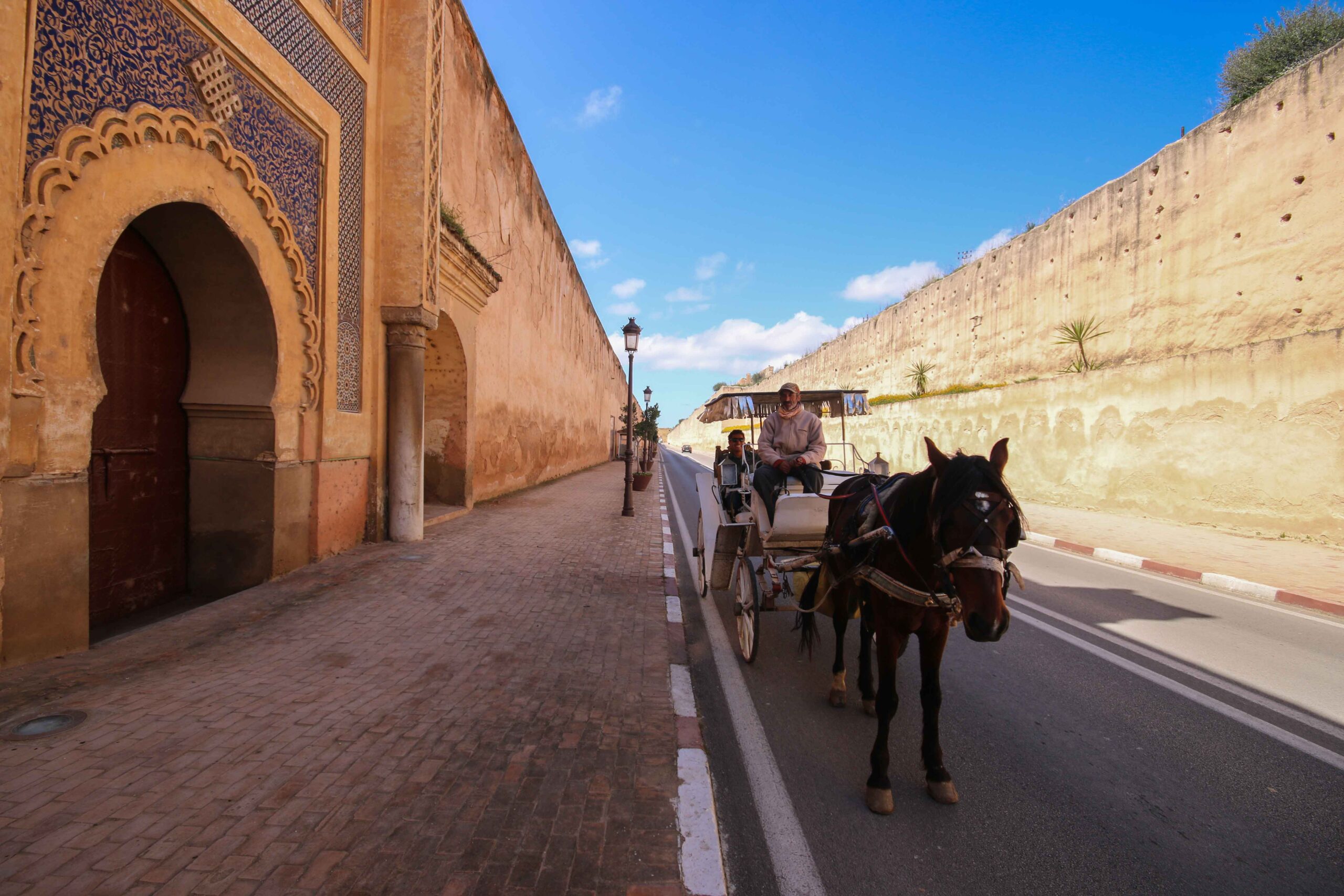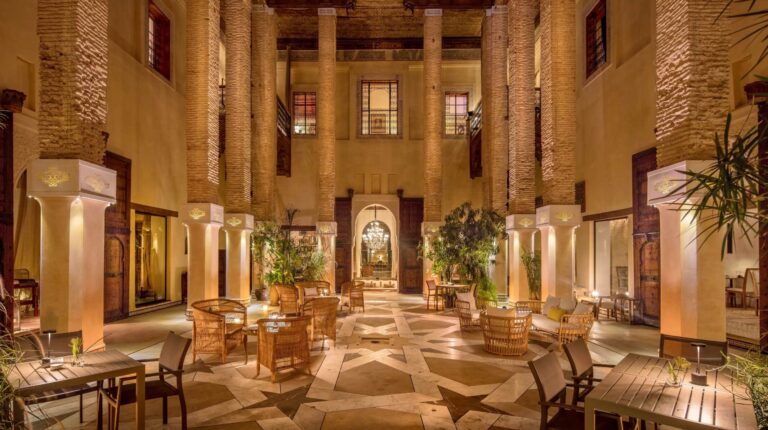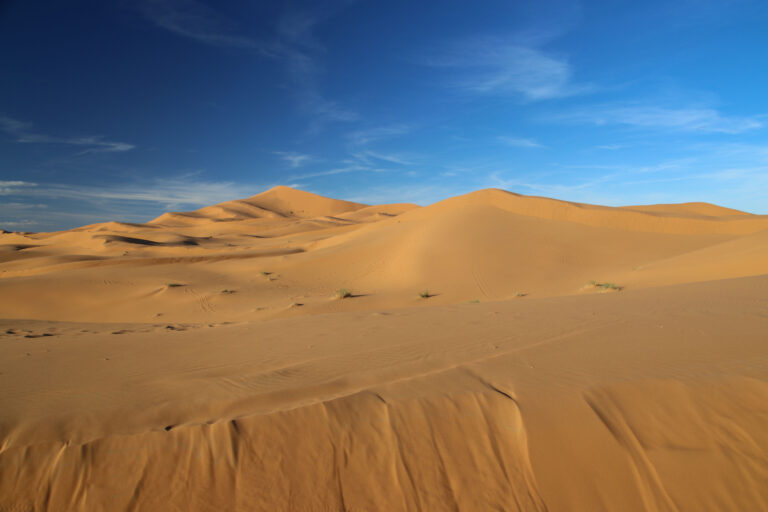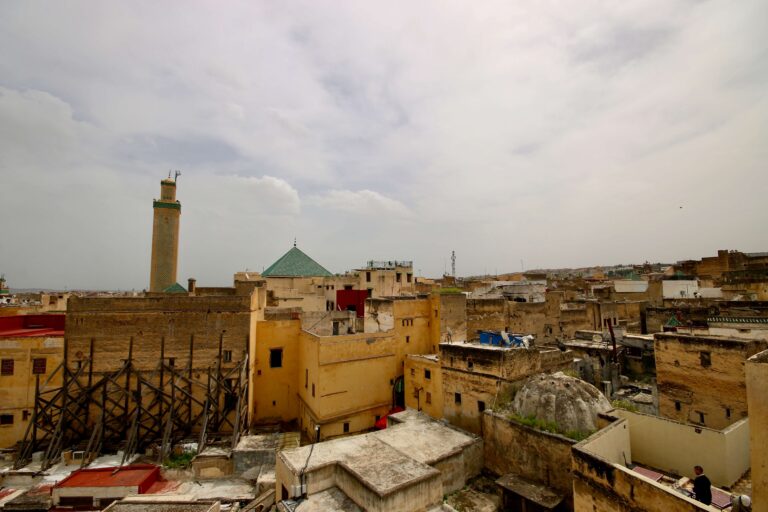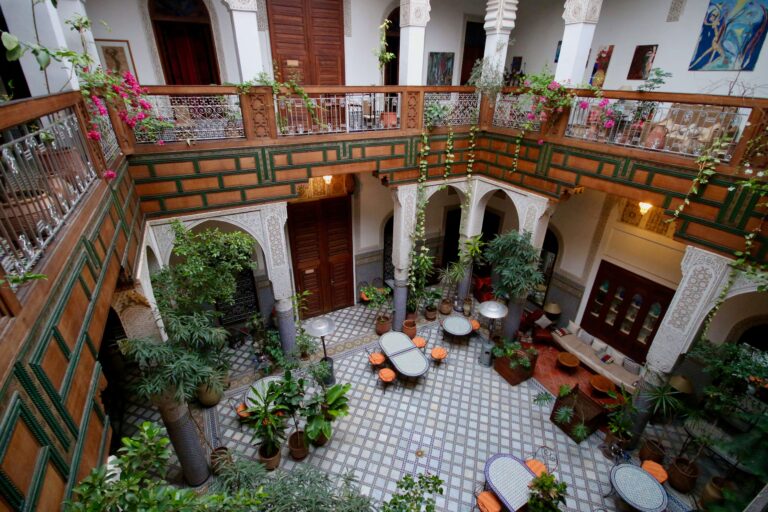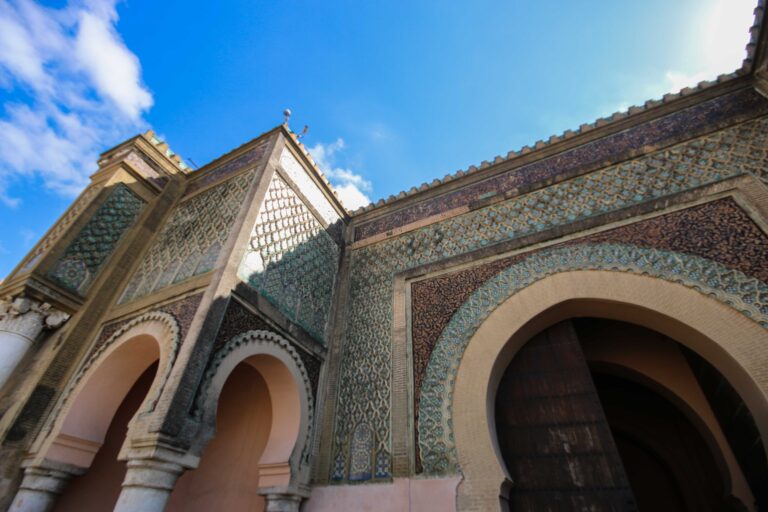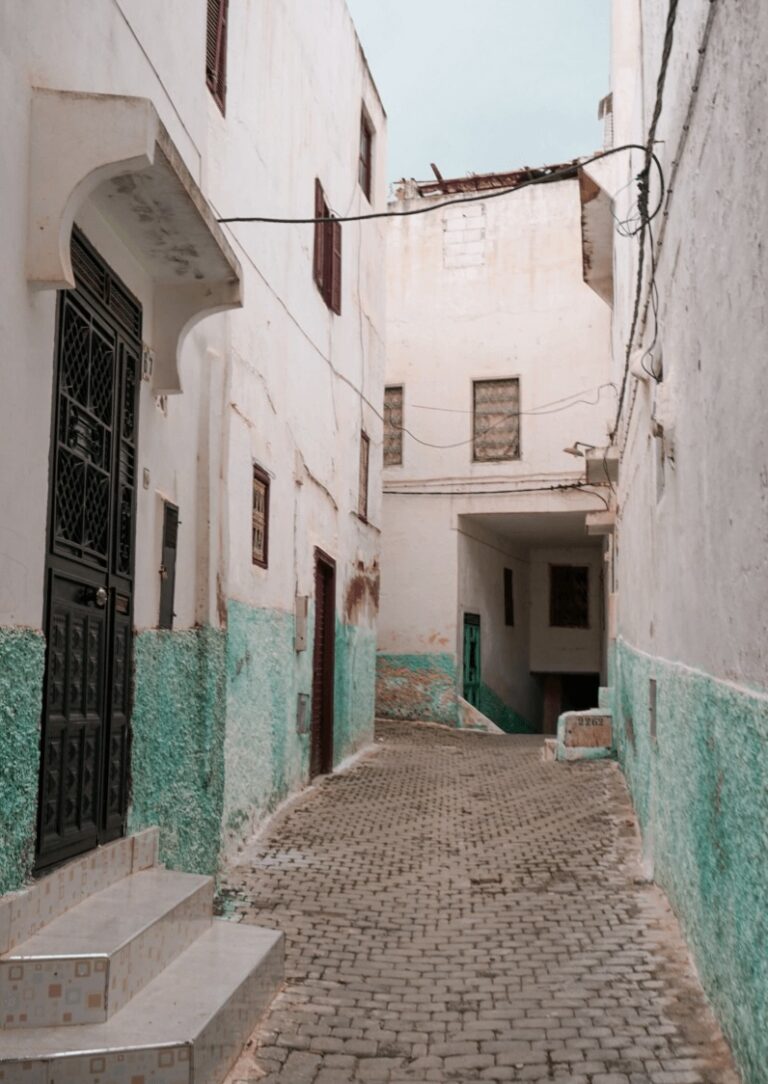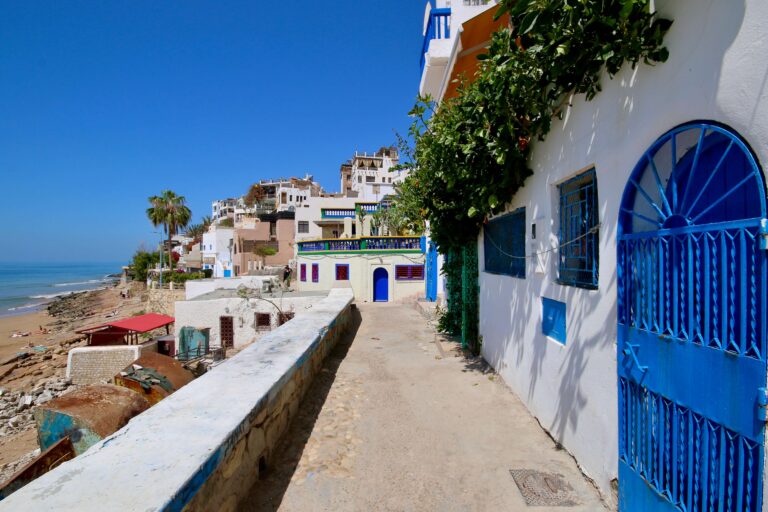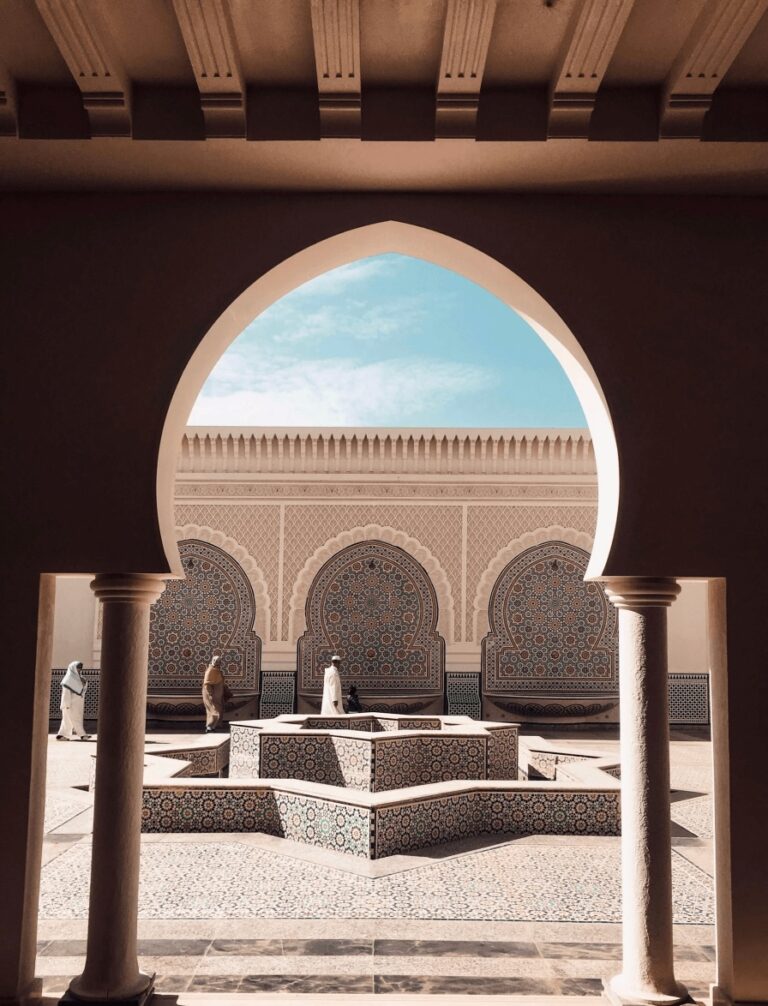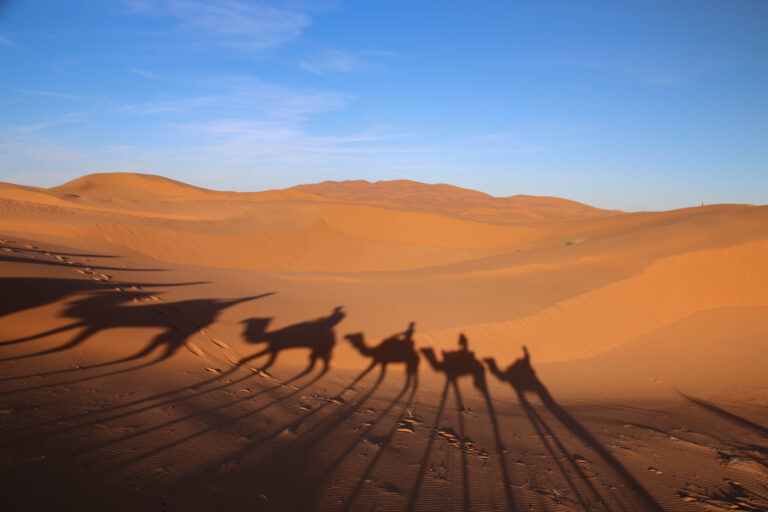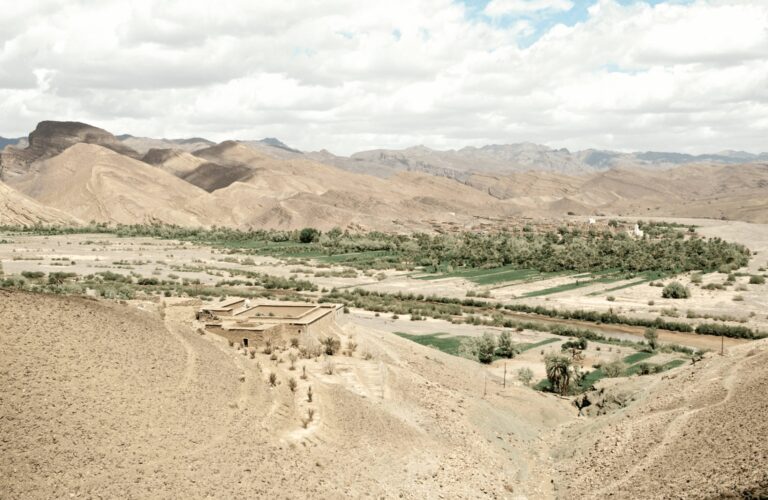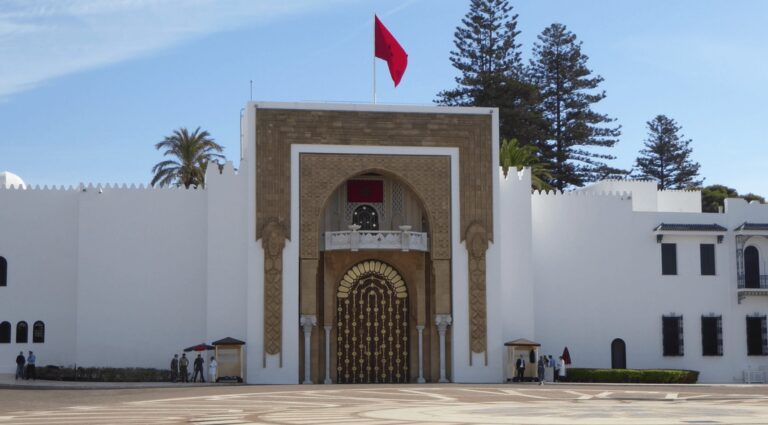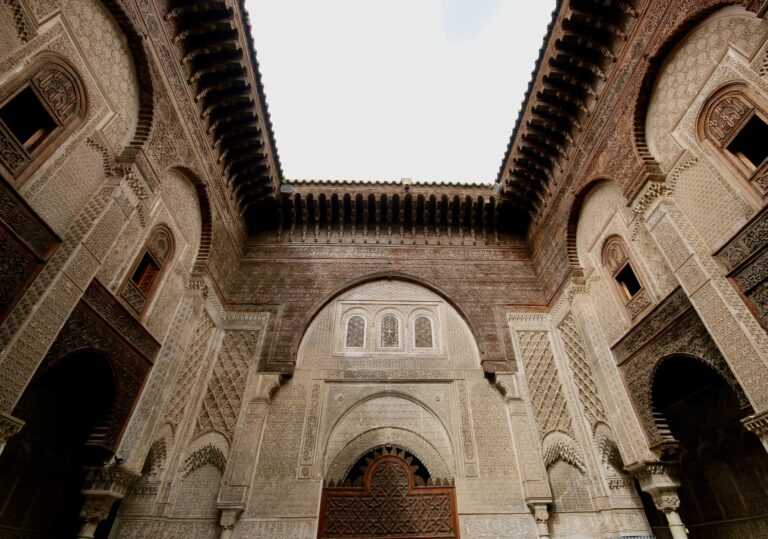3 of the Best Museums in Meknes
Looking for a culturally-rich day trip from Fes? Discover 3 of the best museums in Meknes, including a 19th-century palace and an Ismaili-era bastion.
Located in Morocco’s north, between Rabat and Fes, Meknes is a fascinating but often overlooked city. It was established as a modest settlement in the Middle Ages and underwent a transformation when Sultan Ismail ascended to power in the late 17th century.
Determined to elevate his kingdom, Ismail resolved to remodel the city in the opulent style of Versailles, the magnificent palace of his French counterpart, King Louis XIV.
From 1672 to 1727, Ismail’s ambitious vision unfolded, as he rebuilt and expanded Meknes’ historic kasbah into a sprawling palace-city. For a time, the city basked in the glory of his architectural masterpiece.
However, this period of prosperity was short-lived, as successive invasions and a devastating earthquake in 1755 took a heavy toll.
Today, only fragments of Ismail’s ambitious legacy remain. These include the immense royal stables that were said to have housed up to 12,000 horses.
Some of the buildings constructed during his reign have now been transformed into museums, showcasing not only the history of Meknes but also the cultural and artistic heritage of Morocco.
In this article, I’ll introduce 3 of the best museums in Meknes, including a 19th-century palace and an Ismaili-era bastion.
To learn more about visiting this fascinating imperial city, check out my Essential Travel Guide to Meknes or my pick of the top things to do in the city.
Meknes also makes an ideal base for exploring the ancient Roman ruins of Volubilis and the pilgrimage town of Moulay Idriss.
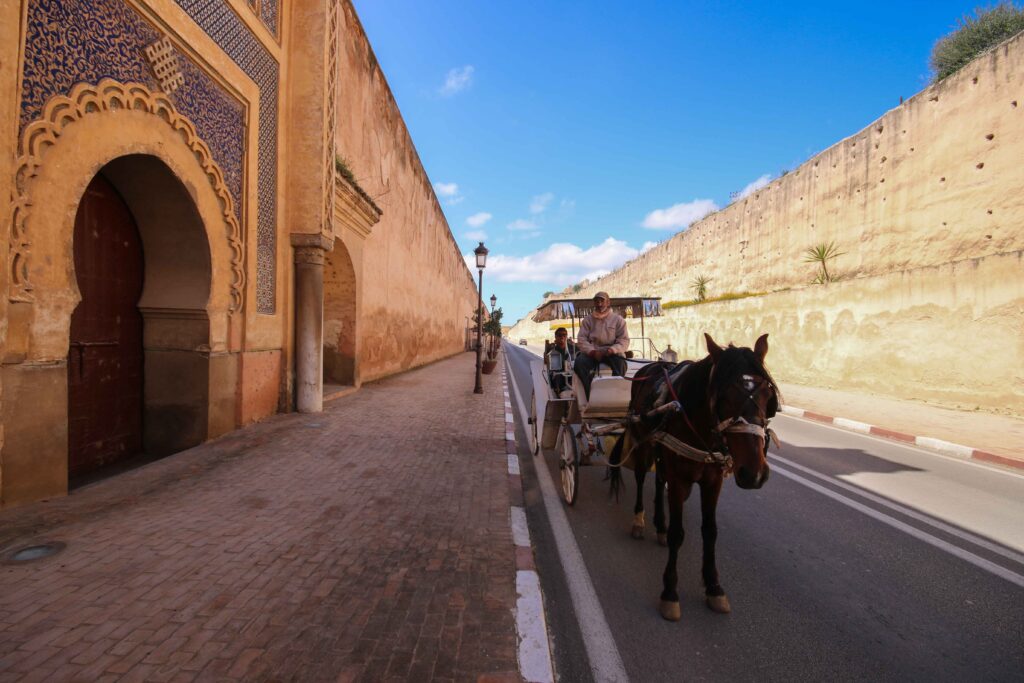
Disclosure: This article contains affiliate links, meaning I earn a small commission when you make a purchase. Affiliate links cost you nothing and ensure my content stays free!
Dar Jamai Museum
Housed within a late 19th-century palace is the Dar Jamai Museum. It serves as a repository of Meknes’s cultural heritage and artistic traditions.
Dar Jamai was constructed in 1882 by the powerful Jamai family, two members of which served as Grand Viziers under Sultan Moulay Hassan.
Located on the northern edge of the historic Place Hedim, this grand building was designed in a classic Moroccan architectural style. The carved stucco and zellije tilework is particularly impressive. This only adds to Dar Jamai’s reputation as one of the best museums in Meknes.
Beyond the ornate exterior, the interior of the palace is equally beautiful, with multiple floors surrounding a central courtyard garden. One of the highlights is a reception room topped by a domed wooden ceiling. It’s complete with traditional furnishings that offer a glimpse into the lavish lifestyle of the Moroccan elite in times gone by.
The museum’s collection is equally captivating and ranges from ceramics and jewellery to textiles and finely-crafted cedar wood pieces. Visitors can admire brocaded saddles, gorgeous gold and silver-threaded caftans. There are also several antique Moroccan carpets in a diversity of regional styles.
Adjacent to the palace is a beautiful fountain covered in the distinctive tilework that is a hallmark of Moroccan design.
Opening hours of Dar Jamai Museum: 10 am to 5:30 pm (closed Tuesdays)
Entrance fee for Dar Jamai Museum: 30 dh
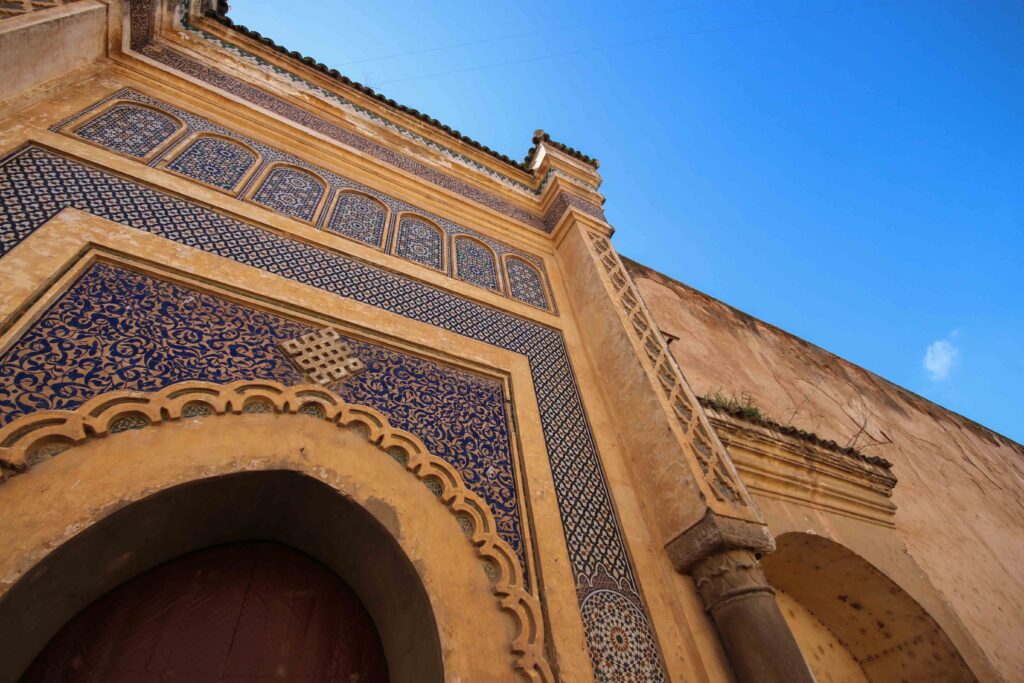
Meknes Museum
This small museum doesn’t quite leave the same impression as Dar Jamai. But it’s still worth a visit if you’re looking to fill an hour.
The Meknes Museum is housed within a former tribunal building along Rue Dar Smen (just within the imperial city walls). It can easily be combined with a visit to the Mausoleum of Moulay Ismail.
Like Dar Jamai, the Meknes Museum is dedicated to the cultural heritage and traditional artistry of the region. Its collection includes everything from embroidery to traditional costumes and Moroccan rugs.
Perhaps the most captivating piece is the set of leather armour, its surface encrusted with coral beads, turquoise studs and coins.
It’s worth noting that the signage within the Meknes Museum is in French only. So bring a translation app if understanding the origins and significance of the artefacts is of particular importance to you.
Opening hours of Meknes Museum: 10 am to 5:30 pm (closed Mondays)
Entrance fee for Meknes Museum: 10dh
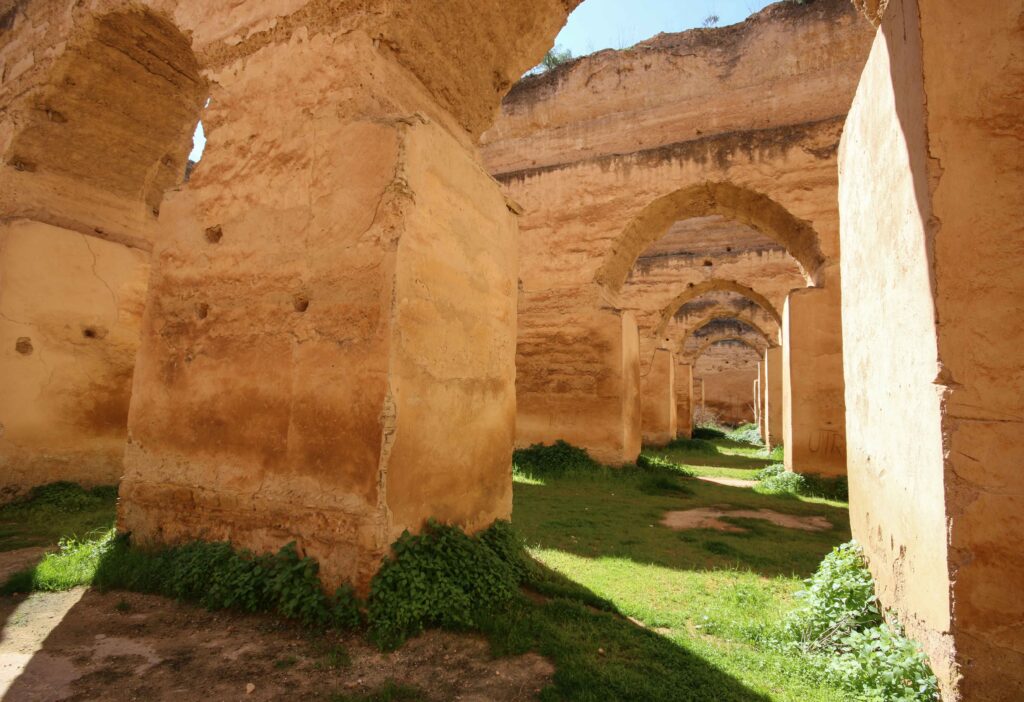
Borj Bel Kari Museum
Also known as the Meknes Pottery Museum, Borj Bel Kari occupies a historic bastion just south of Bab Mansour. It was erected during the late 17th century to further strengthen the defence system that defined the architecture of Meknes.
Renovated in 2003 and now classified as a Historical Monument, Borj Bel Kari houses an impressive collection of pottery from the Rif region. It is assembled chronologically, allowing you to trace the technological evolution and fabrication techniques of the pottery from prehistoric times up to the present day.
The first section offers an in-depth historical and archaeological presentation of ceramic traditions in the Rif region. After admiring the prehistoric ceramics in the first hall, you can get up close to pottery from the pre-Islamic era.
Ceramics from currently operating workshops are also on display, with objects from Zerhoun and Meknes, Oued Laou and Karia Ba Mohamed. Keep an eye out for the reconstructed pottery workshop, which is a highlight of the Borj Bel Kari Museum.
Opening hours for Borj Bel Kari Museum: 9 am to 4 pm (closed Tuesdays)
Entrance fee for Borj Bel Kari Museum: 10 dh

PLAN YOUR TRIP WITH MY FAVOURITE RESOURCES:
Find hotels via Booking
Book tours and attractions via Viator or GetYourGuide
Find a rental car via Discover Cars
Book flights via Kiwi or Booking
Search for buses and trains via 12Go or Omio
Get travel insurance via SafetyWing
Buy a digital eSIM with Airalo
By purchasing through my links, you’ll be supporting my website at no additional cost to you
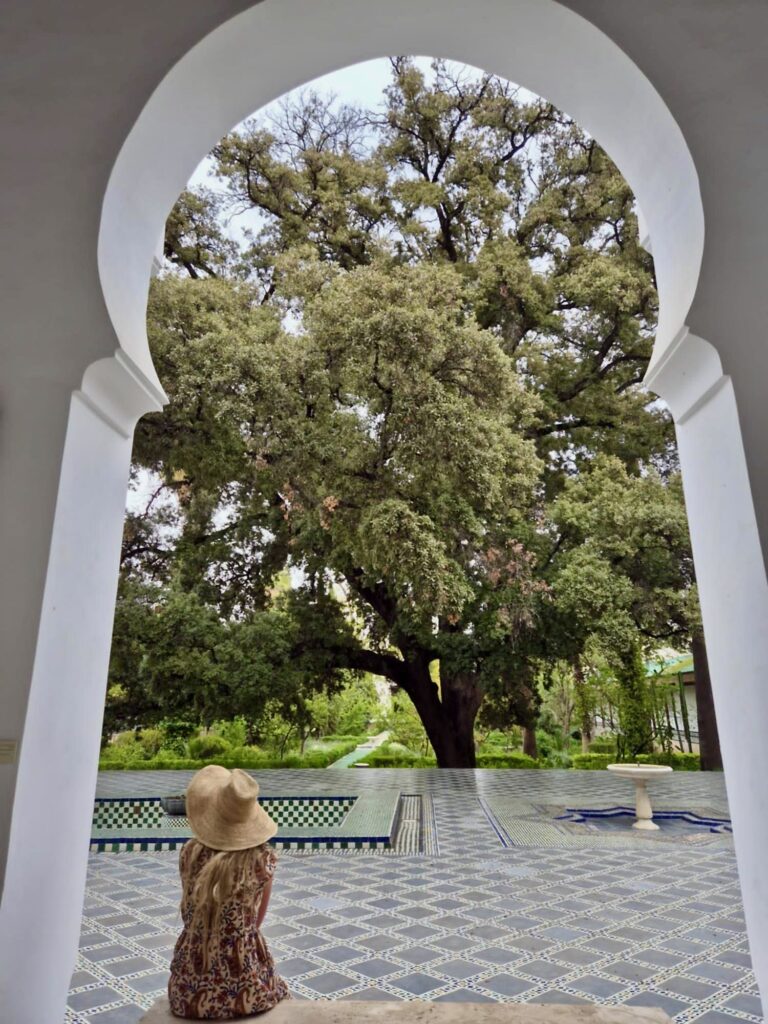
About Me
I’m Malika, a global traveller who first visited Morocco in 2014 before marrying a local and settling down in a little village on the Atlantic coast. Over the years, I’ve developed an intense love for Morocco, its incredible landscapes, storied cities and the exceptionally generous hospitality of its people.
Malika in Morocco is a place to share my years of experience exploring the country, from north to south and from the Atlantic Ocean to the Sahara Desert. As a resource for travellers visiting Morocco, I want to encourage others to experience this captivating destination the way they desire, whether that’s independently or under the expert guidance of local tour operators.
I believe strongly in supporting responsible and sustainable tourism initiatives while inspiring travel experiences that are life-impacting and mutually beneficial for both travellers and locals.
-
8 Best Luxury Hotels in Fes: Morocco’s “Cultural Capital”
Looking for the best luxury hotels in Fes? Explore this curated collection of high-end stays, including beautifully restored riads and modern retreats. Hidden gems and historic treasures await in Fes, Morocco’s cultural capital. Stays here are all about wandering through the maze-like medieval medina, uncovering artisanal wares in the souks and marvelling at the centuries-old…
-
4 Unforgettable Tours to the Sahara Desert from Fes
Looking for the best tours to the Sahara Desert from Fes? Explore this curated collection of multi-day trips, including budget-friendly small group adventures and private desert tours in Morocco. If there’s one experience that’s high on many travellers’ lists when visiting Morocco, it’s spending a night in the Sahara Desert. Having been lucky enough to…
-
5 Best Food Tours and Experiences in Fes: Home of Fassi Cusine
Looking for the best food tours in Fes or foodie-related experiences? Discover five incredible ways to experience Fassi cuisine and culture in one of Morocco’s oldest cities. Home to one of the world’s oldest cuisines, Morocco is a deservedly popular destination for foodies. It’s also a destination I’ve been lucky enough to eat my way…
-
11 Highly-Rated Riads in Fes: Morocco’s “Cultural Capital”
Looking for the best riads in Fes? Discover 11 inspiring places to stay in this ancient city, all of which abound with the charm of traditional Moroccan residences. Fes is one of Morocco’s most storied cities, with a history stretching back to the 8th century. It’s an incredible place to visit, not only for its…
-
An Imperial Gem: Essential Travel Guide to Meknes
Looking for the best things to do in Meknes or highly recommended places to stay? Discover the ideal time to visit, tips for getting around and the best tours in this essential travel guide to Meknes. Located less than an hour’s drive from Fes, Meknes is often overlooked by travellers, despite its historical significance as the…
-
A Holy Town: Essential Travel Guide to Moulay Idriss Zerhoun
Looking for the best things to do in Moulay Idriss Zerhoun or highly recommended places to stay? Discover the ideal time to visit, tips for getting around and the best tours in this essential travel guide to Moulay Idriss Zerhoun. Perched dramatically on the slopes of the Khyber and Tazga hills, Moulay Idriss Zerhoun is…
